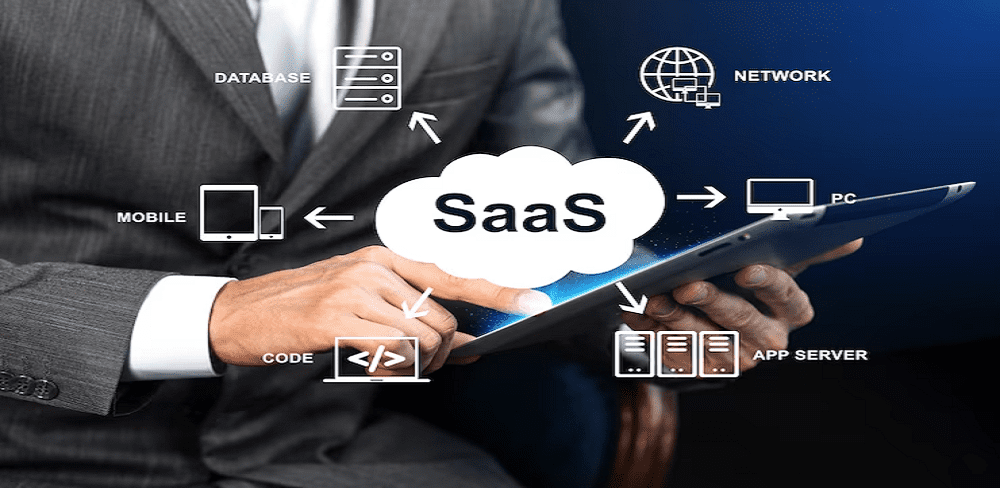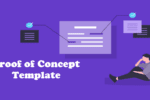SaaS Product Development: An Ultimate Guide
The IT industry has been revolutionized by software-as-a-service or SaaS. The way organizations communicate, collaborate, organize projects, and even carry out large-scale operations has been revolutionized by tools like Google Workspace, Microsoft Slack, Zoom Hubspot, and others.
It’s not surprising that SaaS will generate end-user spending in excess of $208 billion dollars by 2023. Even larger companies are incorporating SaaS to break down their monolithic applications.
Businesses have always been attracted to the SaaS industry by its steady growth, booming revenues, and untapped opportunities. The SaaS sector is doing exactly that right now. The huge revenue expected in the coming years has attracted big and small companies to launch their SaaS offerings.
This guide covers all the information related to SaaS product development that any business, startup, or SME would need to know in order to develop a SaaS app and enter the market. We’ve covered everything from market challenges to opportunities, the development process to considerations made during development.
But first, let’s discuss the SaaS development process so that we may move on to discussing the technical aspects of SaaS product development.
What Is a SaaS Application?
Software as a service (SaaS) is a virtualized environment with a flexible, engaging user interface. SaaS is a cloud-based solution for creating software. You’ll only need a custom design and frontend features.
Any user may access a software-as-a-service product through the Internet without having to download anything on their computer.
It is a hosted application in the cloud that can be accessed from multiple platforms, such as smartphones and web interfaces. It offers important features like customization, remote access, scalability, and easy maintenance to help a business grow. SaaS does not require special instrumentation. SaaS software is more user-friendly.
Why Should You Build A SaaS Product?
These advantages show why SaaS product development is better than traditional software.
- SaaS is easier to maintain and cheaper than traditional desktop software.
- SaaS can help companies reduce piracy by reducing the ease of stealing cloud-based software.
- You can offer your SaaS users upgrades and an expanded service mix much more easily. You can easily scale SaaS apps and increase your revenue.
- SaaS has a wider user base because it is more appealing to users due to its ease of access from any device.
- You don’t need to spend money on pricey hardware infrastructure if you use SaaS.
Successful SaaS Product Examples
There are many challenges that the SaaS sector faces. Many SaaS providers have overcome these challenges with excellence. Here are some of the most popular SaaS product development solutions in various industries.
1. Communication
The pandemic forced people to work remotely, in the comfort of their own homes. This also led to the rise of remote working. Communication tools exploded at that time.
- Slack: When you consider communication tools, this is usually one that springs to mind. Your one-stop shop for all of your communication requirements is this tool. There are a tonne of features in this tool. It allows you to create channels for various projects and communicate with remote team members. This tool can be integrated into 2000+ applications for convenience.
- Zoom: it is another communication tool that made life easier both during and after the pandemic. This is a teleconferencing SaaS that allows you to share screens and make audio and video calls.
2. Project Management
Project management has always been a headache for businesses. Project management tools are one solution to these hassles. Nowadays, company owners have access to a variety of technologies that aid in product management saas and progress monitoring. This is especially valid when dealing with scattered teams or remote engineers. The top project management tools available for SaaS product development are these.
- Trello: Trello simplifies collaboration between teams and is used by small businesses, startups, as well as large companies. There are many features such as time management using cards, drag-and-drop editing, adding labels & tags, sending alerts, etc.
- ProofHub: it is the second most popular saas product management tool on the market. Cloud-based software allows teams to manage, track and discuss projects from a single platform. This tool is made even more powerful by features like project reports, workflows, and rapid project discussion.
3. Business
There are many tools available to help you run your business smoothly. One SaaS suite enables all functions of the business.
- Google Workspace: It is the most popular SaaS application that provides a complete set of tools to support all business processes. No business has ever used Google Suites. There are many applications that make business easier, whether it’s Gmail or Google Chat for emailing or chatting, Google Docs or Drive for creating and sharing files, Google Meets or Google Meets Online for online calling, or any other application of Google Workspace.
4. Sales, Marketing & CRM
Sales & Marketing is the second most popular category of SaaS tools. Many SaaS providers are now offering their expertise on different types of software, thanks to the development in marketing and sales automation. Below are some of the most popular.
- Hubspot: Originally an inbound platform, Hubspot is now a top-notch sales, marketing, and CRM tool. It offers a suite of functionalities including CRM, CMS, and lead generation. Real-time analytics is also available. This is a growth-oriented software that integrates sales and marketing automation into CRM and defines the life cycle stages of leads.
- Salesforce: it is a very popular CRM software that leads the market. Businesses of all sizes use this customer relationship management SaaS to manage customers at different stages of the life cycle. Drag-and-drop drag-and-drop functionality automates the processes. You can manage all your customer data on an intuitive dashboard.
- Buffer: it is the next tool on the list. This tool gives businesses the flexibility they need to manage their campaigns on social media. This tool has become popular because of its many features, including content scheduling on social networks, browser extensions, and the ability to provide metrics for social posts performance and other analytics.
SaaS Products for Businesses: Benefits
You now have a good understanding of SaaS. It’s time to educate yourself on SaaS’s benefits. These are the main advantages that you need to be aware of for SaaS product development.
1. Reduction in Costs
SaaS is a great way to reduce your costs. Users do not have to buy the entire software package or obtain a license, as they would with a traditional software model. They only have to pay a small subscription fee. Businesses can easily reduce their costs and increase their profits.
2. Reduces Time to Market
In the present competitive economy, time is a crucial component. The SaaS products can be used by users in just minutes, as they are already configured and installed. It helps to reduce the time-to-market.
3. Easy Integration and Scaling
SaaS apps are hosted in the cloud, making it simple to incorporate them into the current infrastructure. To accommodate the requirements of expanding organizations, these solutions are adaptable and simple to scale.
4. Secure
SaaS is a very secure product. Users and businesses don’t have to worry about data security. SaaS products come with security guarantees, backups, and more.
How to Build a SaaS Product?
Now that you know the benefits of SaaS products, the main question arises “How to develop a saas product”. To answer this query, let’s now jump into the SaaS product development section.
Step 1: Analyzing the Market
Analyzing the market segment that you are interested in is your first step in SaaS product development. Before you begin developing anything, you must understand how the market works. Consider key inquiries like:
- What is your target market for SaaS?
- Is there a competitor in this segment?
- If so, who are your competitors?
- Does your competitor offer a SaaS product or a monolithic product?
- What is your competitive advantage over your competitors?
You will find it easier to define your SaaS strategy once you have defined the high-level requirements. This will allow you to identify new business opportunities and analyze your competitor’s successes and failures.
Step 2. Developing a Business Plan
Create a solid business plan for your SaaS product. To successfully launch a SaaS, you must have a business strategy. A business map will help you visualize your journey toward market dominance. Here are some important factors to take into account while writing your business strategy for SaaS product development.
- What makes your SaaS different from other products? How can SaaS solve the problems inherent in on-premises systems?
- What are the primary problems that your intended audience is facing? What are the main problems that your intended audience has?
- Choose a SaaS marketing strategy. Select from alternatives like affiliate programs or social media marketing. Internet ads, inbound content marketing, and internet advertisements are more options.
- Define your SaaS monetization strategy. Plan out your customer support and upgrade, referrals, and refunds.
- Estimate startup costs and identify funding sources for your SaaS business. The funding may come from an investor, a bootstrapped company, or even your savings.
- Make a list of the objectives you want to accomplish throughout your trip. Based on your vision for the SaaS business, set both short-term and long-term objectives.
Step 3. Choosing a Tech Stack
Your technology stack contains all the languages, frameworks, and tools that will be used for SaaS product development. Your solution stack is dependent on many variables, from the cost to build and run it to its scope for scalability.
- Frontend
The front end is responsible for all the content that your customers see on their screens. Intellinez prefers to use modern JavaScript frameworks such as React, Angular, and Vue.js because they best meet the needs of a SaaS-based business model.
- Backend
It is your back-end that will communicate with the server side of your SaaS app. It must handle all core functionality for your SaaS application and be reliable. Intellinez uses advanced back-end frameworks such as Ruby on Rails or Node.js.
- Database
Your SaaS application will be able to access all of the information it needs from your databases. You can choose between PostgreSQL or NoSQL. Intellinez uses PostgreSQL because it is the most advanced database available.
- SaaS hosting providers
Even if your SaaS product is just getting started, you need to find a reliable saas product development services provider. The majority of cloud hosting companies are reliable and flexible. They have advanced technology. After comparing all of the features, you can choose from Amazon (AWS), Google Cloud, Microsoft Azure, or Heroku.
Step 4. Creating A Team
Before you can do SaaS product development, you must assemble a team. The success of your SaaS solution is totally dependent on the effectiveness and expertise of your workforce. You have three options when choosing your ideal squad:
- In-house-team
A team in-house gives you complete control over the saas product development process. This option is expensive and only for companies with a steady workload and a track record of success. This option is usually used by businesses that already have bootstrapped businesses and are looking to expand into SaaS.
- Freelancers
Freelancers are the cheapest resource available to SaaS businesses. You can hire specialists with extensive experience in certain domains. You will have to constantly monitor and micro-manage several individuals.
- Custom Software Development Company specializing in SaaS Products
Custom SaaS software is the perfect middle ground between these two options. Hire a saas product development company that specializes in this area and can act as your remote team, providing high-quality service, automated management, and efficient resource utilization.
Step 5. Building an MVP
Before releasing your SaaS product development, verify its value proposition. A minimum viable product that confirms the viability of your SaaS service and offers enough functionality to entice early customers. Your SaaS solution will be able to scale and adapt once you have entered the market and started generating interest and profits. An MVP helps you:
- Gather and analyze feedback on the usability and experience of your SaaS products.
- Verify the right scaling of your application in the case of a spike in traffic.
- You can test the validity of your business hypotheses to see if you are able to make money with your product.
Step 6. Launch your Final Product
This is just the beginning. Here is a four-fold checklist to launch your SaaS Product successfully:
- Test Your Best
It is important to test your product in every way possible. Impressing your target market with a solid product is essential. You should release a good first version, especially if your target audience is enterprise customers. Focus groups can give you an objective opinion.
- Soft Launch
Spending your marketing budget for your launch is a bad idea. A small but successful launch is preferable to a massive failure. Continue to collect feedback and improve your product. Your feature drop parties are likely to be larger than your launch lunch if your base is solid.
- Do not charge at first
The addition of a payment gateway may take several months, and you will incur integration costs that could delay your launch. If you MUST charge, then at least choose a freemium model or a flat-rate minimum to maximize customer acquisition in the early phases.
- B2B SaaS marketing
SaaS Products are usually geared toward businesses. You should therefore create a marketing plan that is centered around this. Intellinez specializes in B2B SaaS Marketing. According to us, email marketing and LinkedIn are the best ways to reach the masses with your SaaS Product. With informative and insightful content, you can target and retarget the decision-makers on LinkedIn. Once they reach the end of your funnel, email marketing can be used to acquire them.
Common Mistakes To Avoid While SaaS Product Development
If you follow the steps to develop a SaaS product above with caution and intelligence, you will do SaaS product development in a way that is both market-ready and profitable. You can still fall into a snare if you make the following mistakes.
Mistake #1: Not Prioritizing User-Friendliness
Your target audience may have very different expectations or experiences of software. Please do not get so caught up in the advanced features of your SaaS that you overlook its simplicity. The customer is king. They won’t return to your app if they can’t use it easily. Create the user interface for your application so that it is appealing to users and easy to navigate.
Mistake #2: Failure to Consider Scalability
Evolution is the key to all software development. Even the largest tech giants are constantly evolving and expanding their service mix.
It doesn’t matter how you position your SaaS initially. You may have the option to scale up your product to respond to factors such as growing demand, a diverse user base, and changing industry trends.
It will be difficult to adapt a SaaS to future demands if you do not include these considerations in your SaaS product development strategy.
Mistake 3: Failure to Learn From Competition
Lessons we can learn from other’s mistakes and successes are often the least expensive. It is important to understand why customers choose to purchase SaaS products in the same field as yours and what categories of users have yet to be reached. By keeping a tight watch on your rivals, you may adapt techniques that work. Additionally, you should look for service gaps that you might exploit to position your product more effectively.
Conclusion
The demand for SaaS has grown over the last few years. It is anticipated that this will rise soon. By this point, you ought to be well-versed in SaaS programming. It’s time to get going. Hire software developers to create high-performing SaaS solutions if you want to expand your business with SaaS product development.










